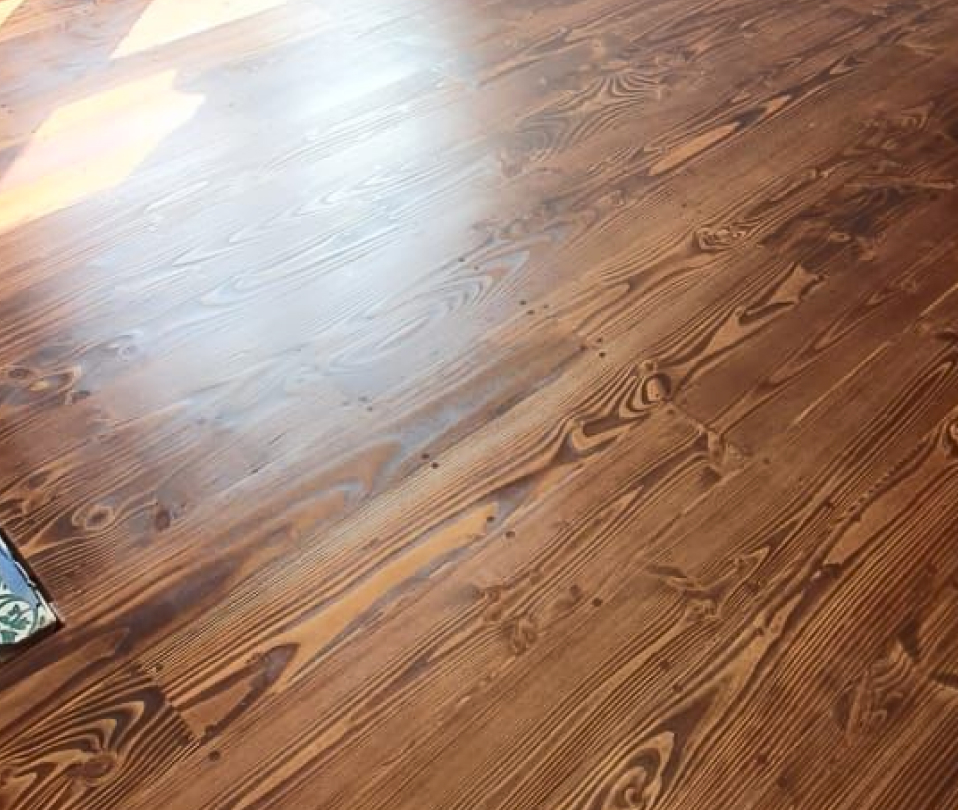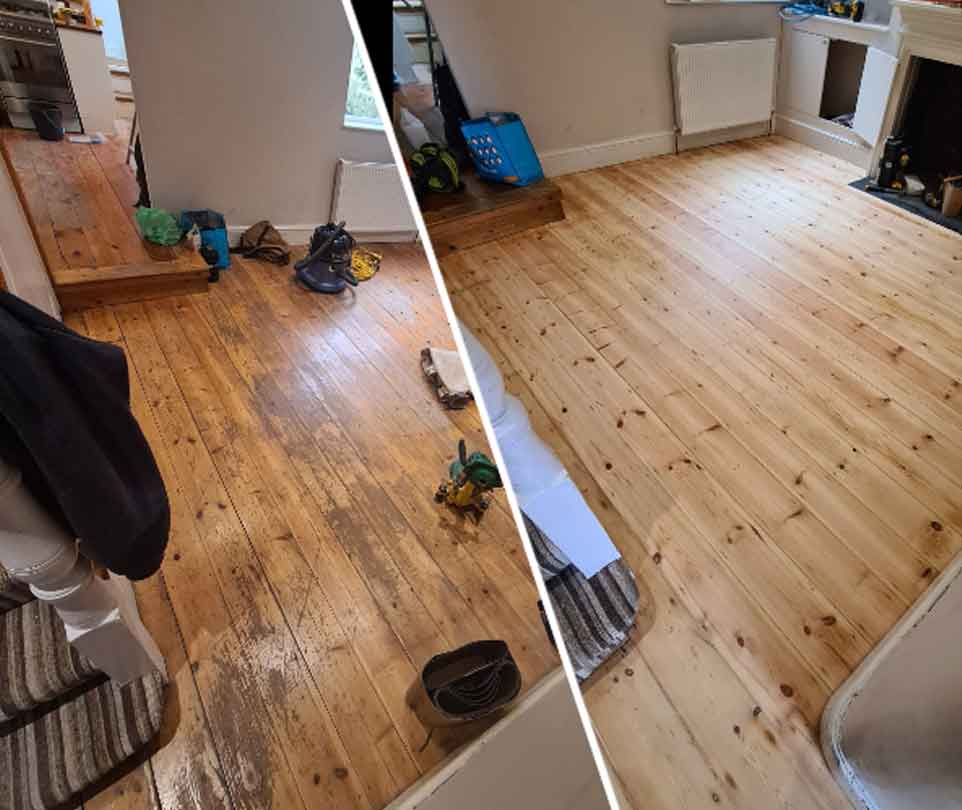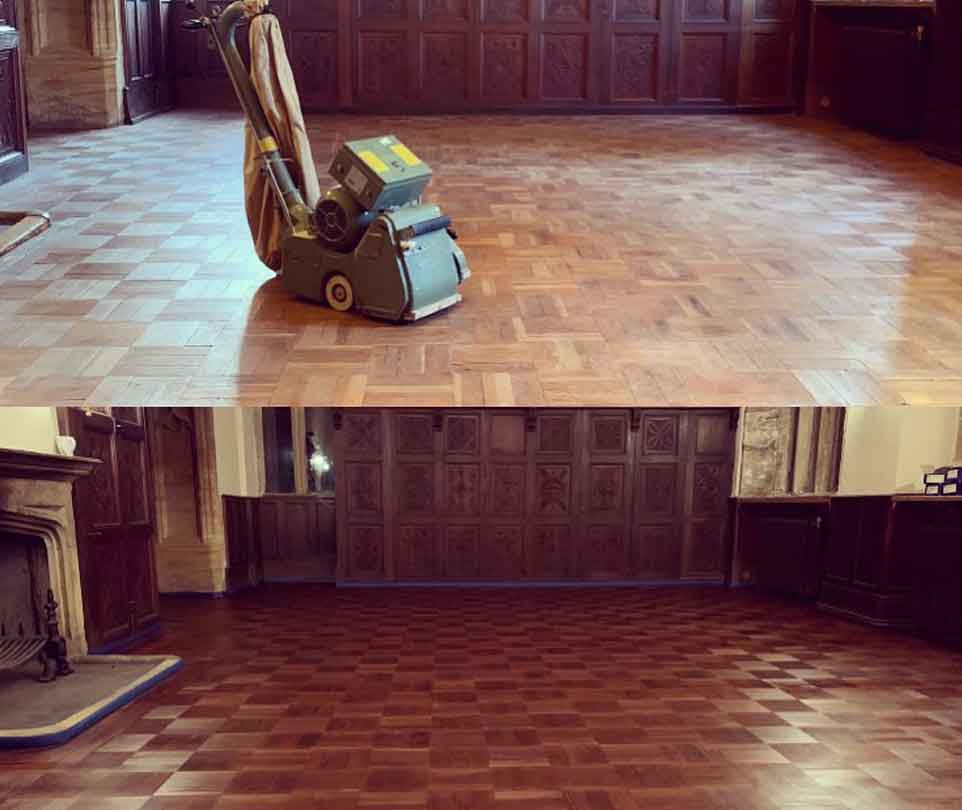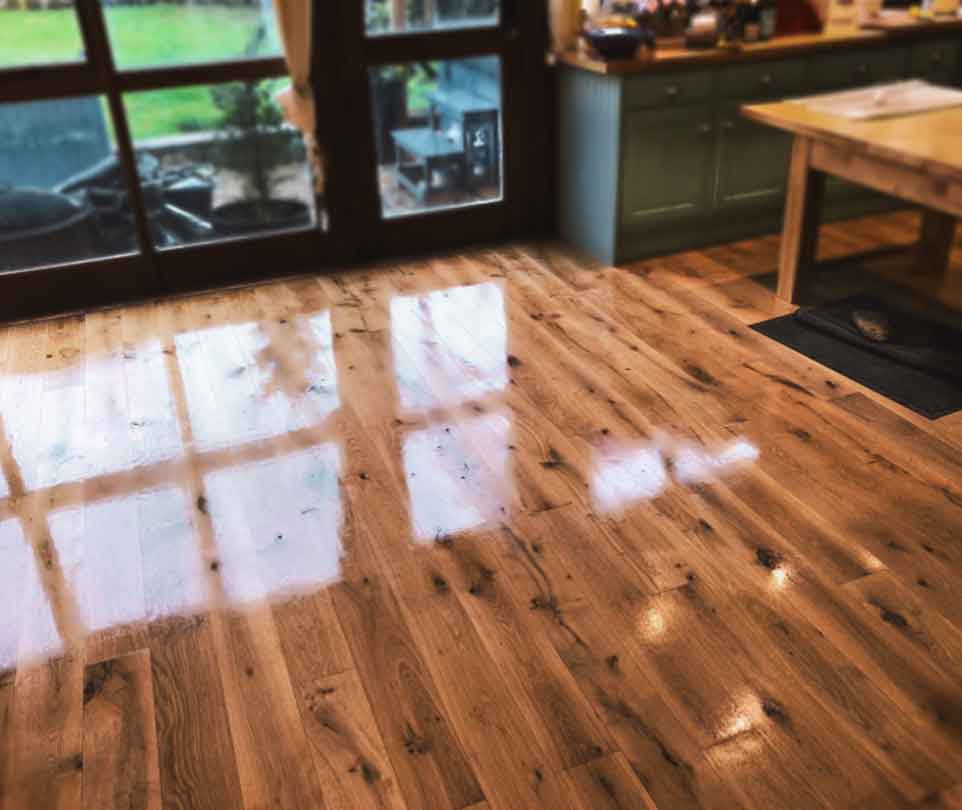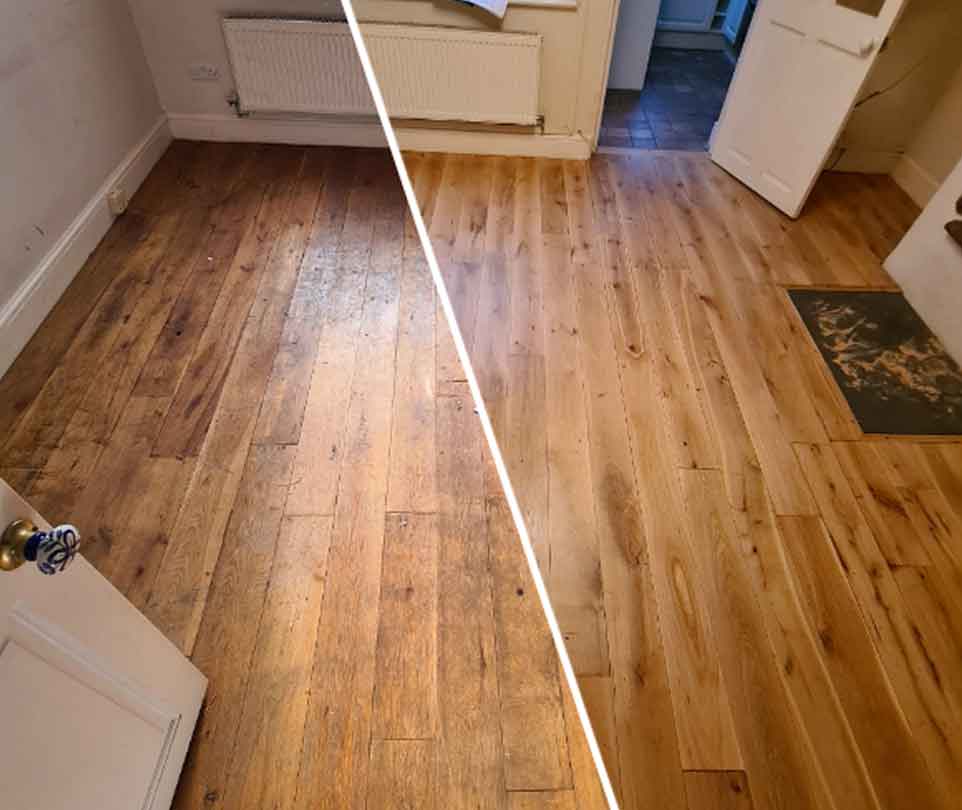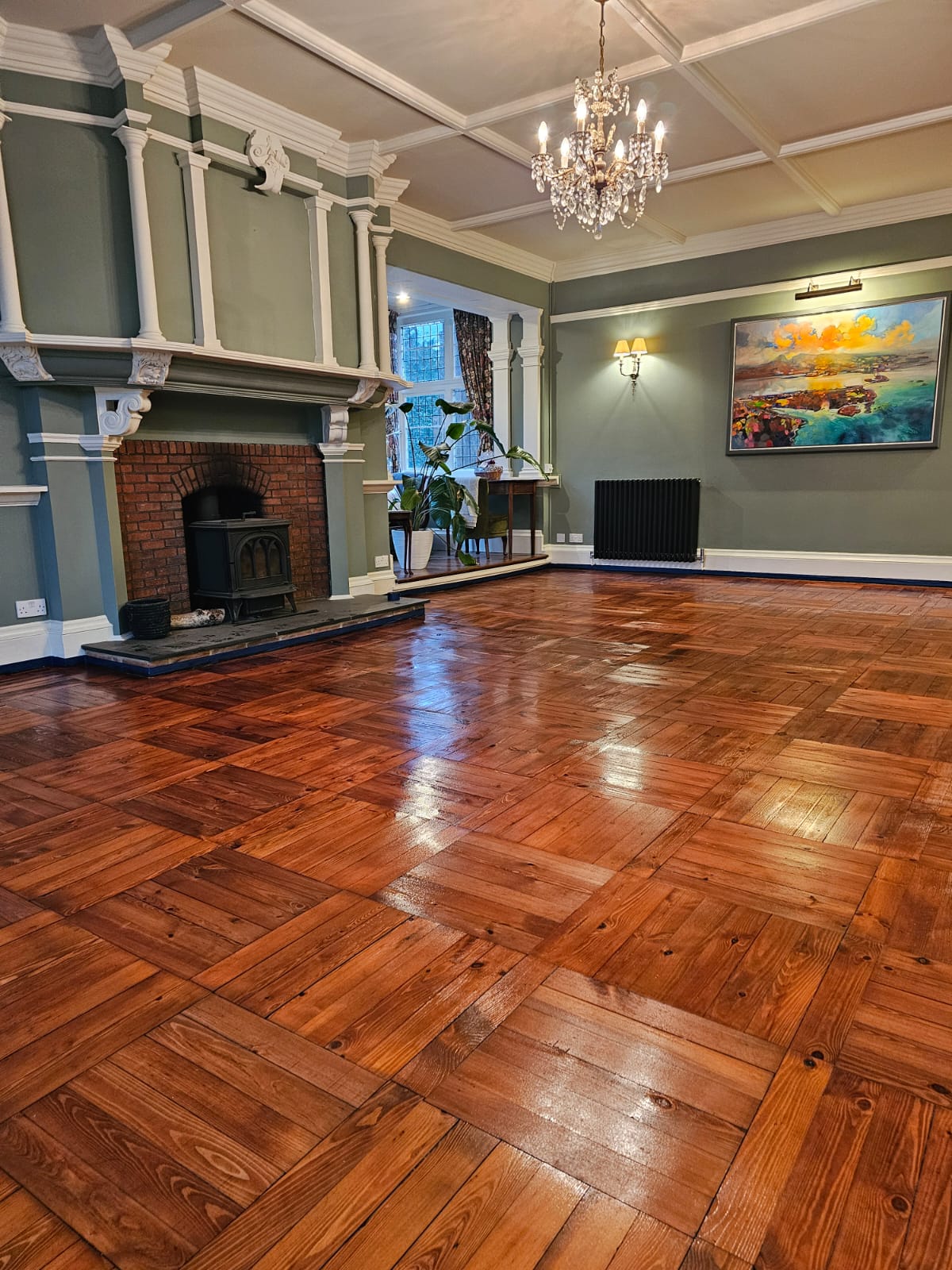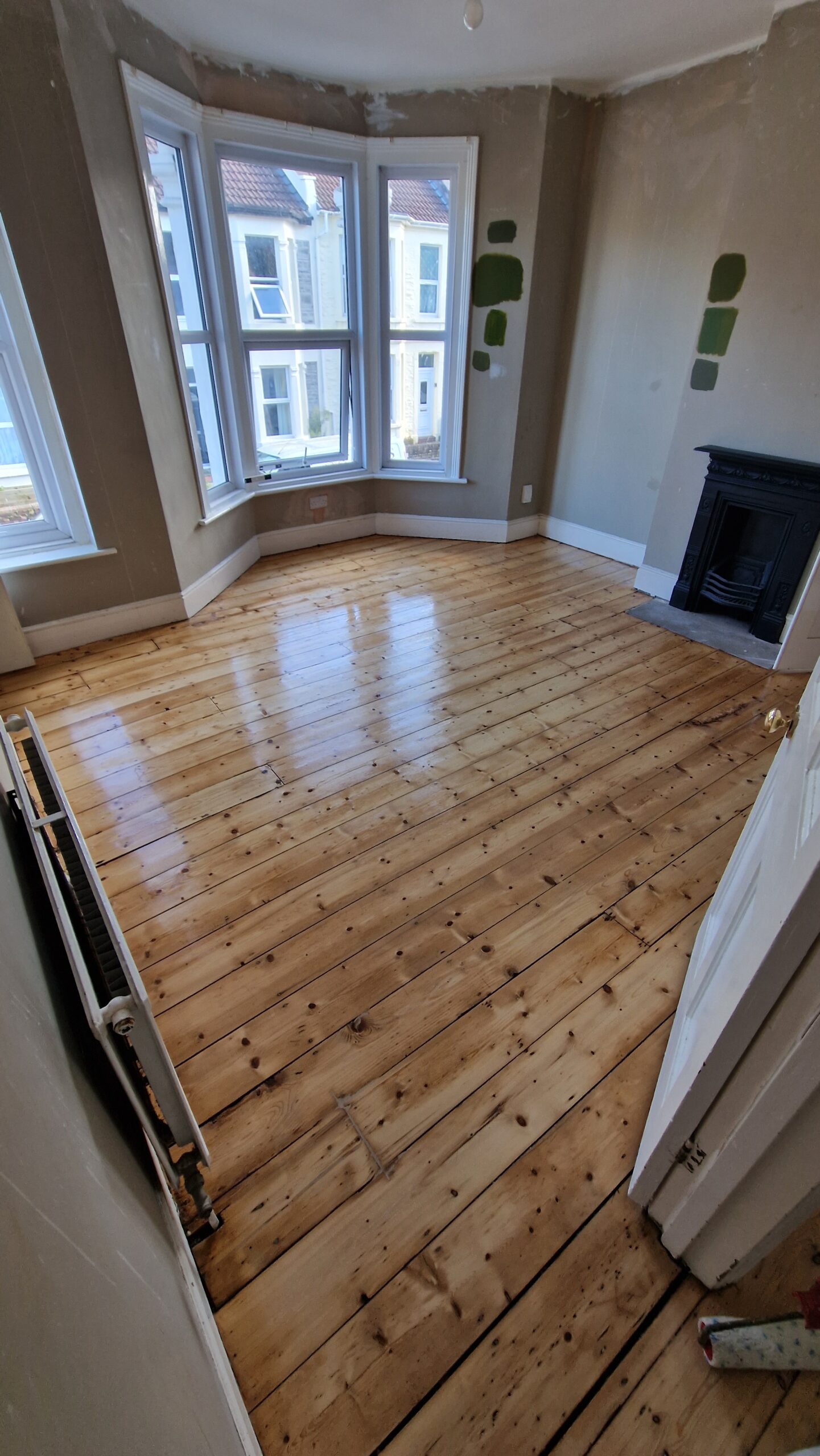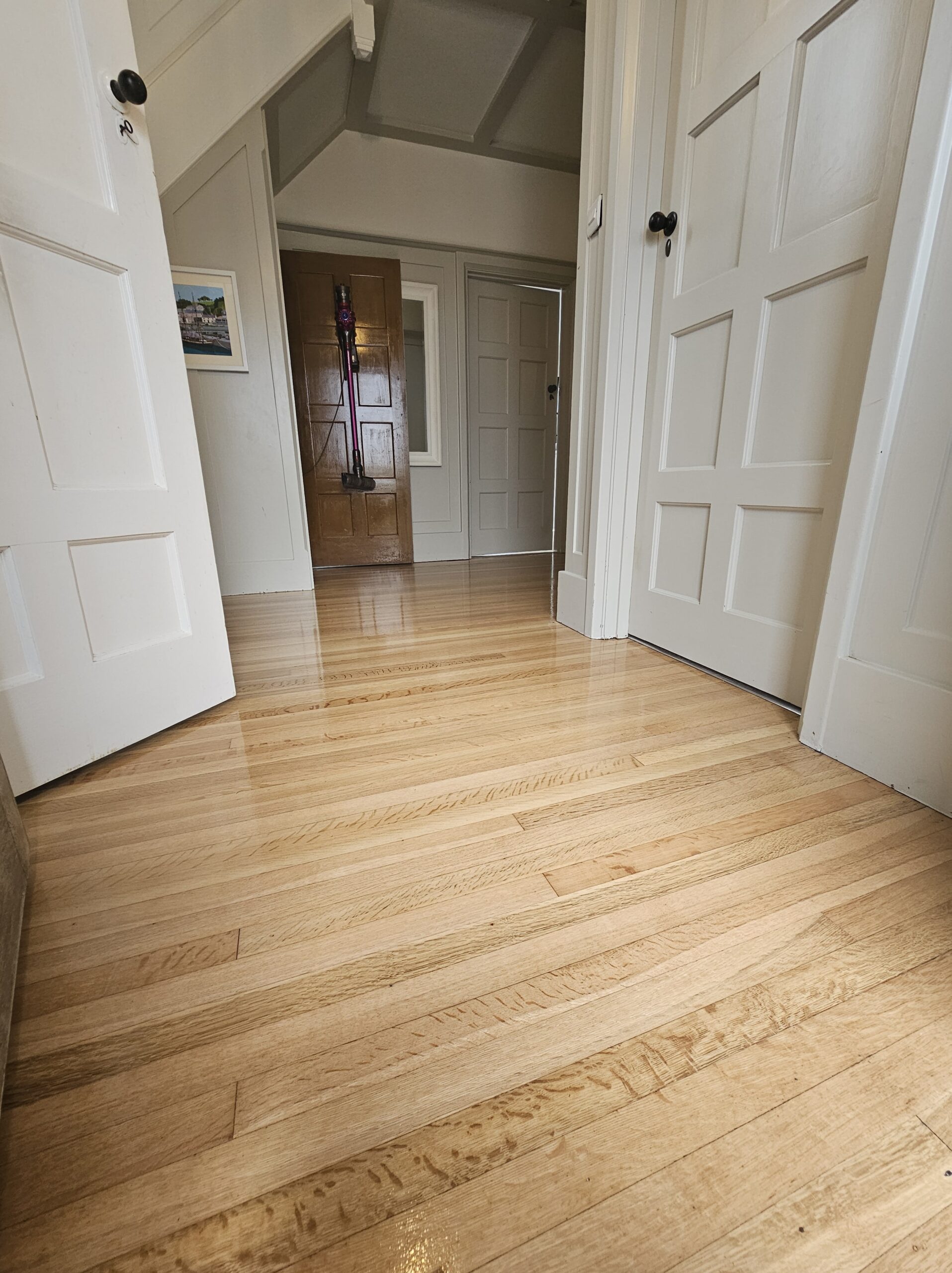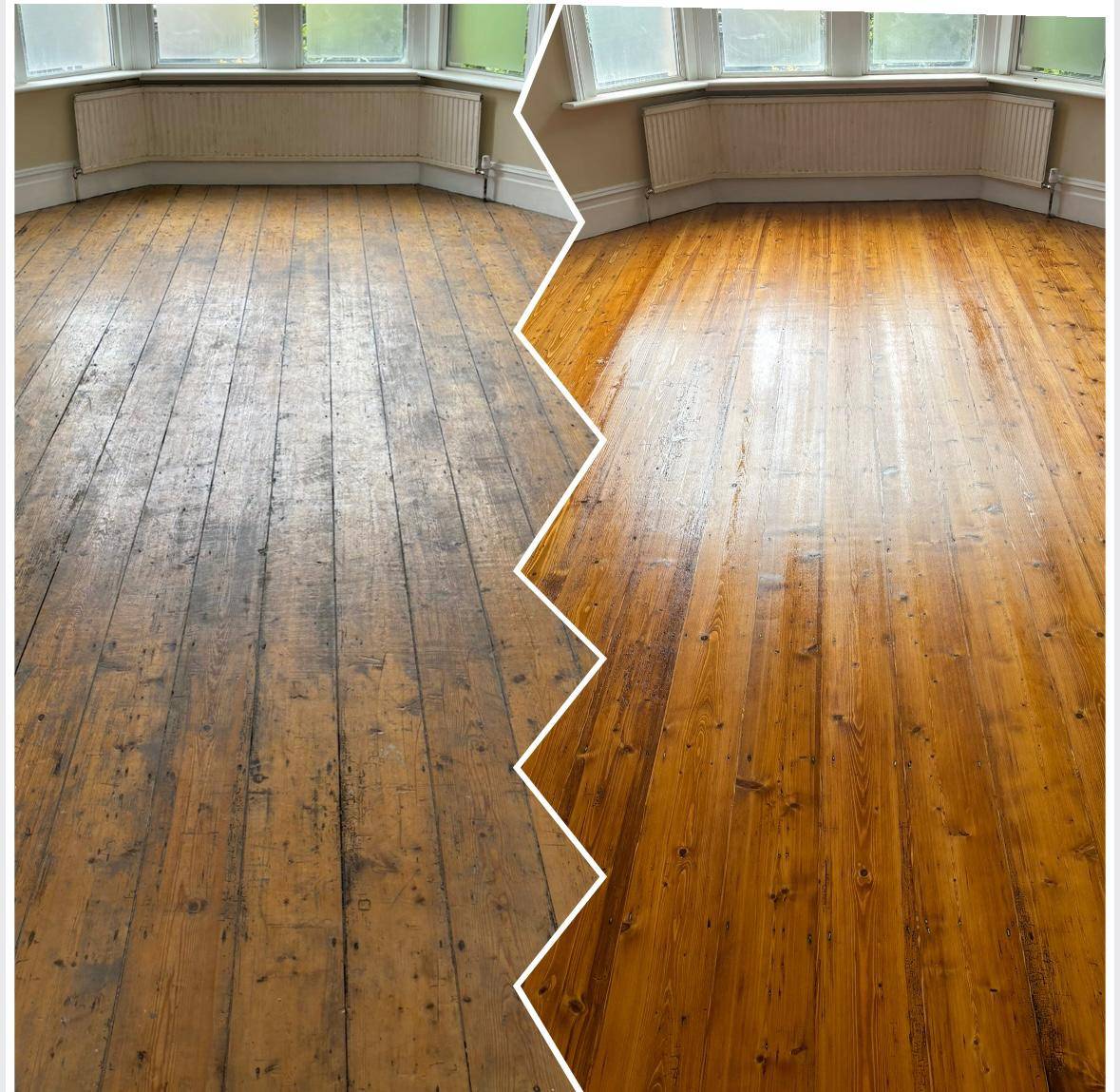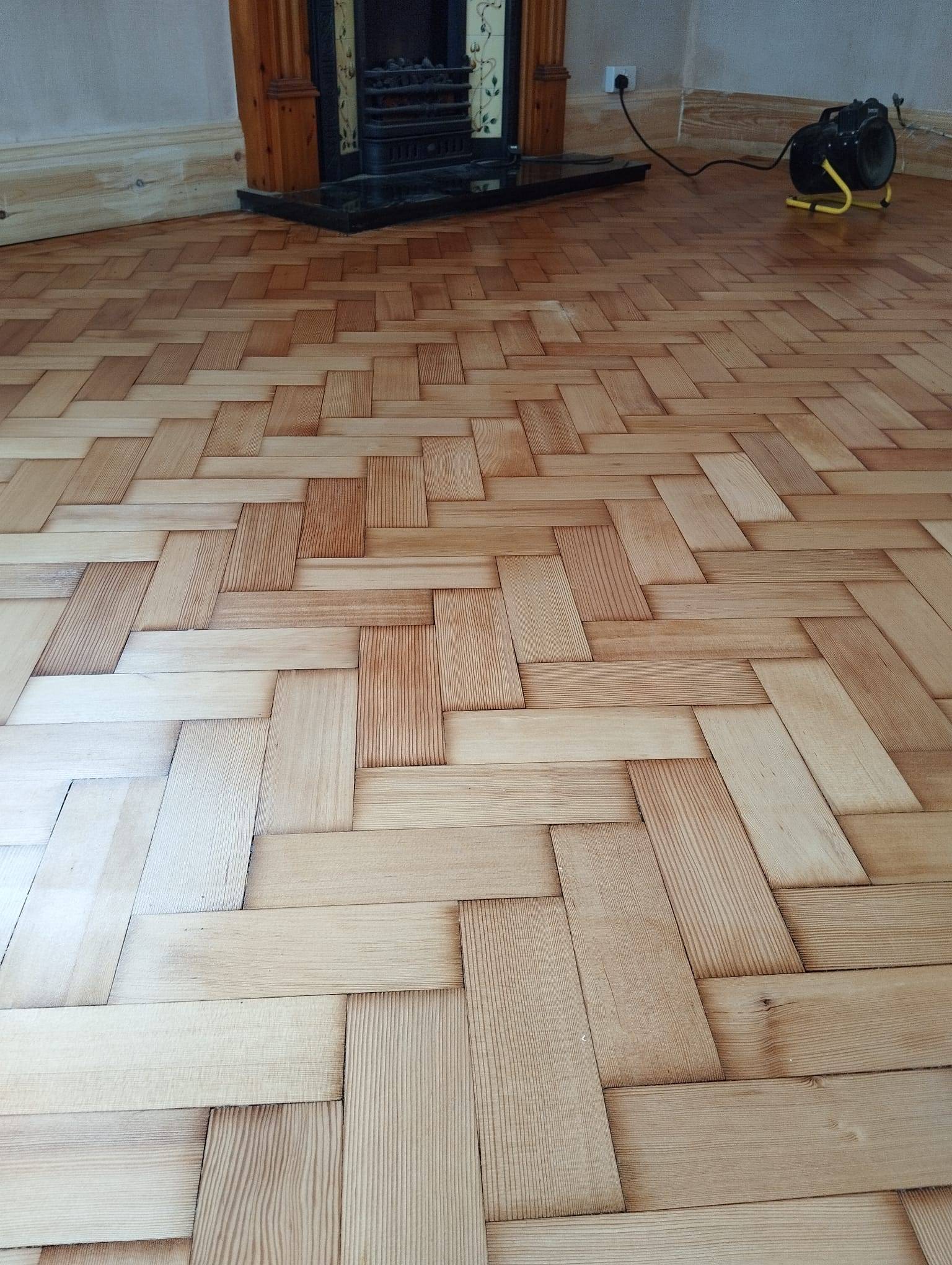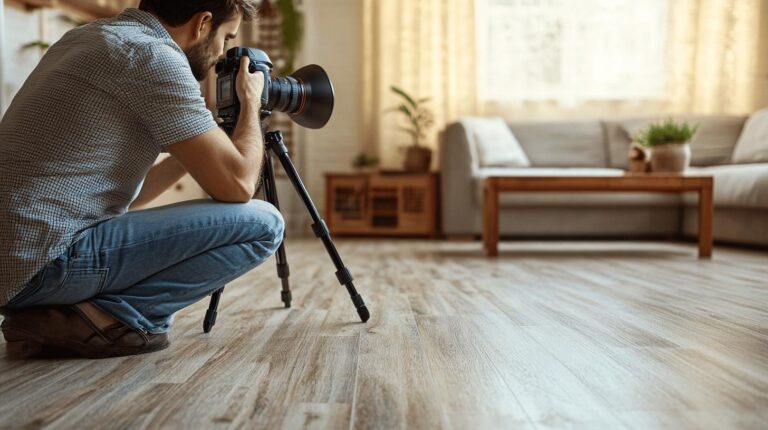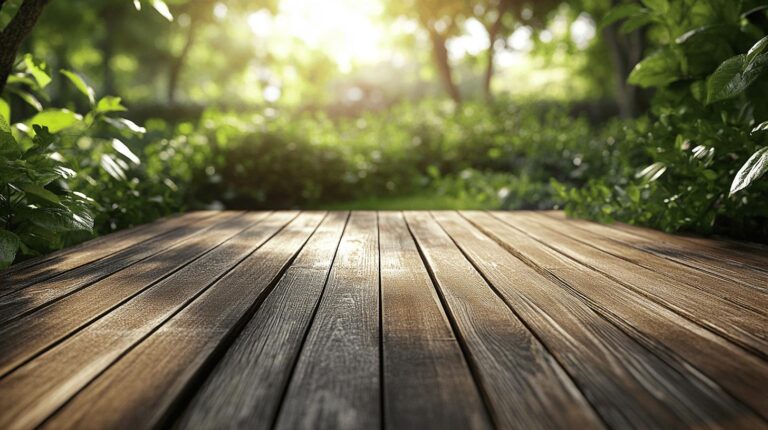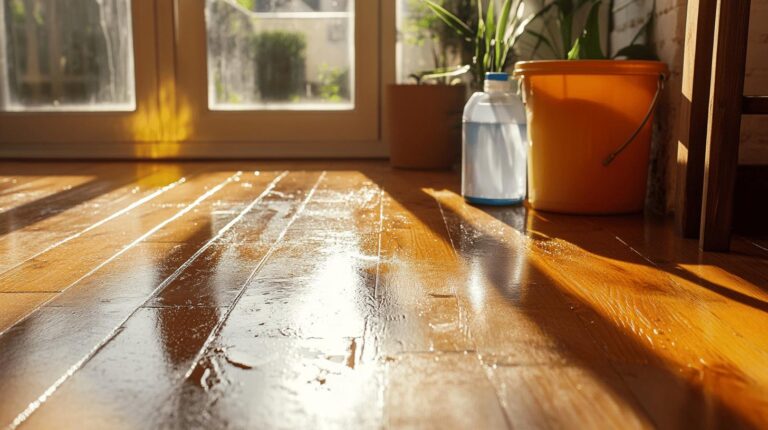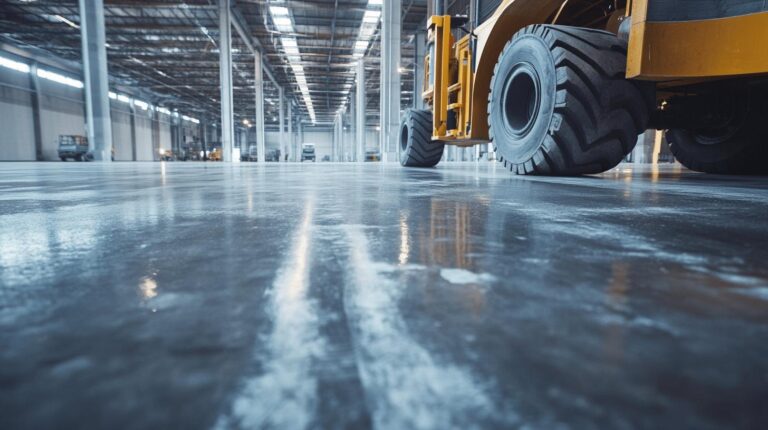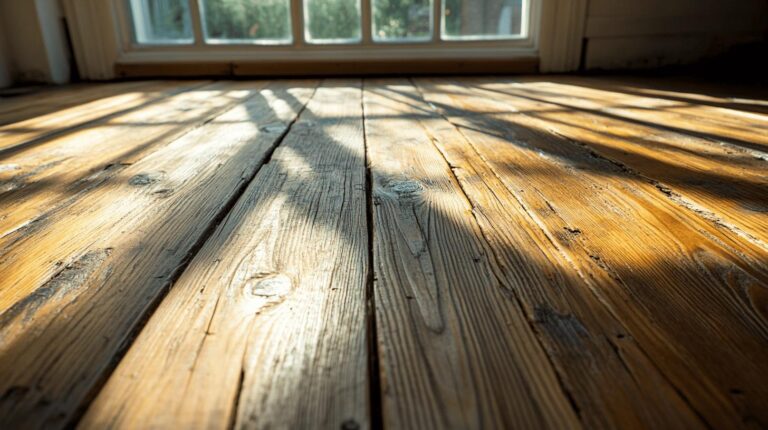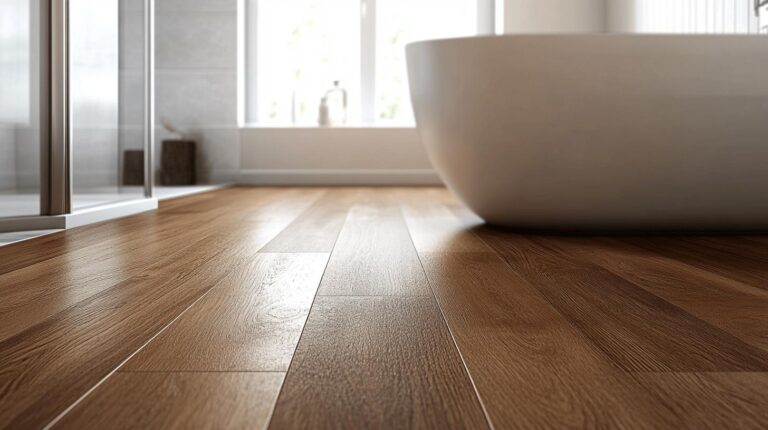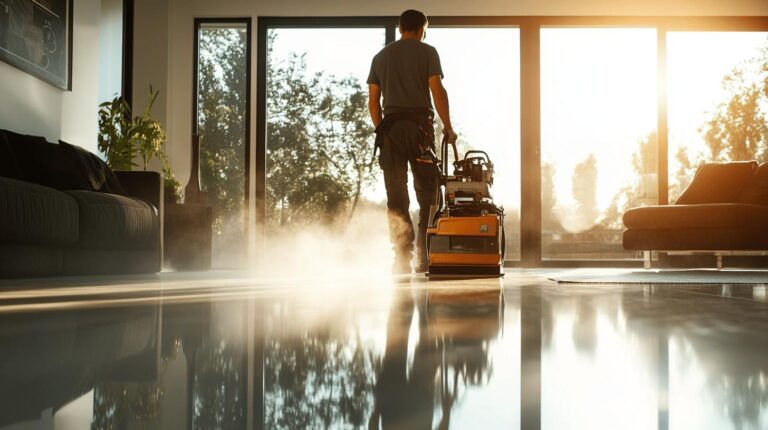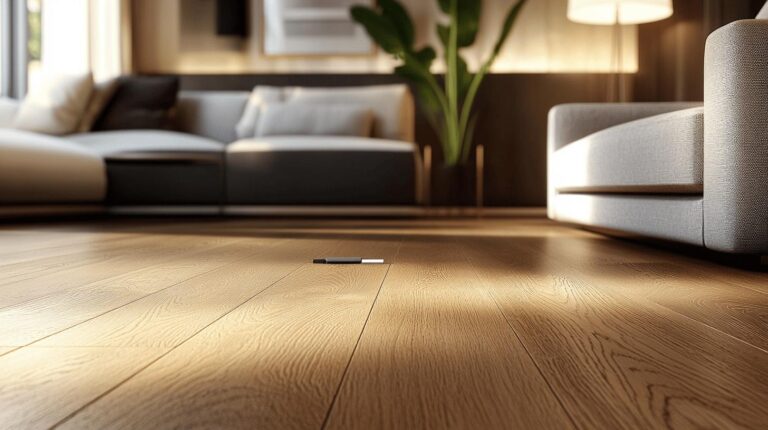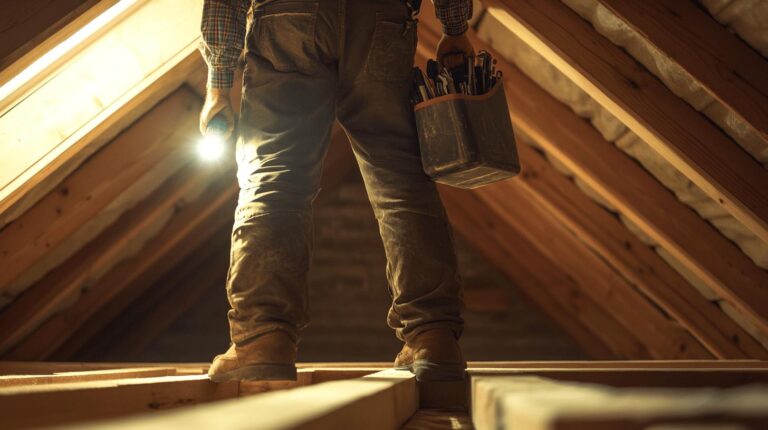Wood floor sanding is the process of removing the top layer of your wooden floor to eliminate scratches, scuffs, stains, and unevenness caused by daily wear. It reveals fresh, smooth wood underneath and prepares the floor for refinishing to restore its original beauty and protection.
Sanding your wooden floors removes surface-level damage such as scratches, stains, and wear, giving them a fresh look. It also extends the life of your floors by removing damaged layers and preparing the wood for a protective finish that guards against future wear and tear.
Wood floors typically need to be sanded every 10 to 15 years, depending on the level of wear and foot traffic. In high-traffic areas, sanding may be required more frequently to maintain the floor’s appearance and durability.
Most solid hardwood floors can be sanded multiple times. Engineered wood floors can also be sanded, but only if the top layer of wood is thick enough to withstand sanding. Laminate floors, however, cannot be sanded.
Yes, sanding removes most surface-level scratches and stains by stripping away the top layer of wood. However, very deep scratches or stains that have penetrated deeply into the wood may not be completely removed. We will assess your floor and recommend the best course of action.
The time required for sanding depends on the size of the area and the condition of the floor. Typically, sanding a medium-sized room can take 1 to 2 days, including preparation, sanding, and refinishing. Larger or more damaged floors may take longer.
Sanding does produce dust, but at Ryans Restoration, we use modern, dust-extraction equipment to minimise dust production. Our goal is to keep your home or business as clean as possible during the sanding process.
Yes, after sanding, you can choose to stain your floors in a different colour. This is a great opportunity to update the look of your wood floors by lightening, darkening, or enhancing the natural tones of the wood.
We offer a range of finishes, including water-based and oil-based polyurethane, natural oils, and stains. Water-based finishes dry quickly and provide a clear, natural look, while oil-based finishes offer a richer tone. Our team can recommend the best finish based on your preferences and the level of foot traffic in the area.
After sanding and refinishing, it’s best to wait at least 24 hours before walking on the floor in light footwear. For heavier foot traffic and placing furniture back, we recommend waiting 48 to 72 hours to allow the finish to fully cure.
The cost of wood floor sanding depends on the size of the area, the condition of the floor, and the type of finish you choose. We will provide a detailed estimate after inspecting your floor and discussing your preferences during the consultation.
Sanding can help smooth out the surface and remove imperfections, but it won’t fix creaky floors caused by loose floorboards or underlying structural issues. We can assess the cause of the creaks and recommend repairs to address the problem.
While DIY sanding is possible, it requires special equipment and experience to achieve a smooth, even finish without damaging the wood. Professional sanding ensures a high-quality result and reduces the risk of mistakes that could lead to costly repairs.
To maintain your freshly sanded floors, regularly sweep or vacuum to remove dirt and debris. Use a damp mop with a wood-safe cleaner for deeper cleaning, and avoid using harsh chemicals or excessive water. Place mats or rugs in high-traffic areas to reduce wear.
At Ryans Restoration, we offer professional wood floor sanding services with a commitment to quality and customer satisfaction. Our experienced team uses top-grade equipment and finishes to restore the beauty of your wooden floors while protecting them for long-lasting durability. We provide personalised service, ensuring that your floors look their best.

